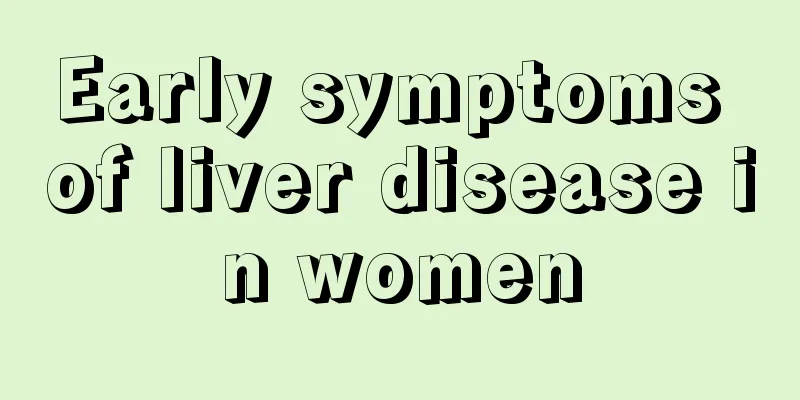Early symptoms of liver disease in women

|
Because the liver needs a long time to excrete toxins, and all the toxins we eat are filtered and absorbed by the liver, the liver is most likely to get sick. When there is a problem with the liver, it is usually not very obvious in the early stages. It needs to gradually worsen as the disease progresses, causing the patient to experience symptoms such as loss of appetite, general fatigue, fever, and abdominal pain. What are the early symptoms of liver disease? The liver is the largest gland in the human body and plays an important role in the body's metabolic process. Liver disease is a very common disease nowadays and is also one of the more difficult to treat. According to liver disease experts, the early symptoms of liver disease are not very obvious. Some patients with liver disease do not even have any symptoms, but some patients with liver disease will have symptoms similar to those of a cold. 1. Fatigue and weakness. In severe cases, the legs feel heavy and tired after a little movement. In mild cases, the patient cannot work for a long time, has low work efficiency, and is lazy to move. 2. Loss of appetite, aversion to greasy food, a feeling of fullness in the abdomen after forcing oneself to eat, and some people may also experience nausea, vomiting, diarrhea, and weight loss. 3. Fever: Generally a low-grade fever with symptoms similar to a cold, such as fear of cold, dizziness, headache, etc. 4. Upper abdominal pain: Upper abdominal pain is common in hepatitis. Patients feel pain in the right upper abdomen and liver area, sometimes radiating to the back; the pain mainly occurs at night and can be relieved by bed rest, and it worsens when coughing or talking or laughing loudly. Some individuals may have an enlarged spleen and pain in the spleen area. 5. Jaundice: Increased bilirubin concentration in the blood causes yellowing of the sclera, skin, and mucous membranes. It is first discovered in the sclera, followed by yellowing of the skin all over the body. The urine is dark yellow and looks like strong tea, and the stool is light in color, like clay. Skin itching may occur when jaundice is severe. 6. Palmar erythema: Palmar erythema appears on the patient's palms, appearing as red patches, especially on the thenar and hypothenar eminences and the bases of the fingers. Press with your hand and the red color disappears. Understand some of the early symptoms of liver disease. If you feel any discomfort, you must go to a regular hospital for timely treatment to avoid delaying the disease and missing the best treatment period. |
<<: Symptoms of poor liver function in women
>>: What to do if leucorrhea is yellow and what medicine to use
Recommend
What is instant oatmeal? How does instant oatmeal help you lose weight?
Among the various grains we eat daily, such as wh...
How much does it cost to check up 42 days after delivery?
The examination 42 days after giving birth is mai...
Is a swan neck natural? What are the methods to train a swan neck?
Swan neck is the favorite look of every beauty lo...
Benefits of walking during late pregnancy
In the late pregnancy, the mother's belly is ...
What is the situation of lower abdominal pain after sex
I believe that many people have experienced lower...
Can't eat peanuts to lose weight? Nutritionists remind you: If you don't want to grow fat around your waist, eat less of these 5 foods
Obesity will seriously affect personal image and ...
Legs are swollen and there is a dent when you press them? Pay attention to these issues
The socks have become tighter, the calves have be...
A woman with a fleshy nose
We know that a girl's appearance is very impo...
Can ovarian tumors be cured?
Ovarian cancer is a malignant tumor that emphasiz...
Will taking detoxifying beauty capsules affect menstruation?
Nowadays, for the sake of health, many people, ma...
What to do if a woman leaks urine when coughing
Coughing is a relatively normal condition. It may...
What to do if you have diarrhea at 50 days of pregnancy
Many women experience diarrhea when they are 50 d...
Good appetite after pregnancy
After a woman becomes pregnant, she will experien...
Six major causes of low back pain in women, you must read
Low back pain is a common symptom among women. Th...
Elderly people can effectively prevent falls by doing these actions
Author: Tang Qin, Deputy Secretary-General of the...









